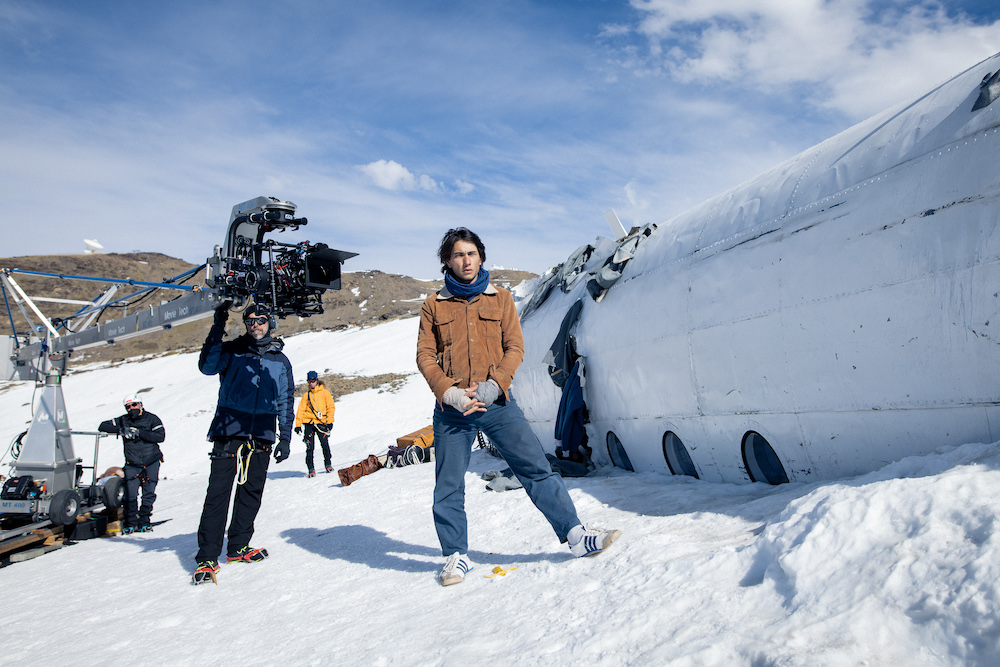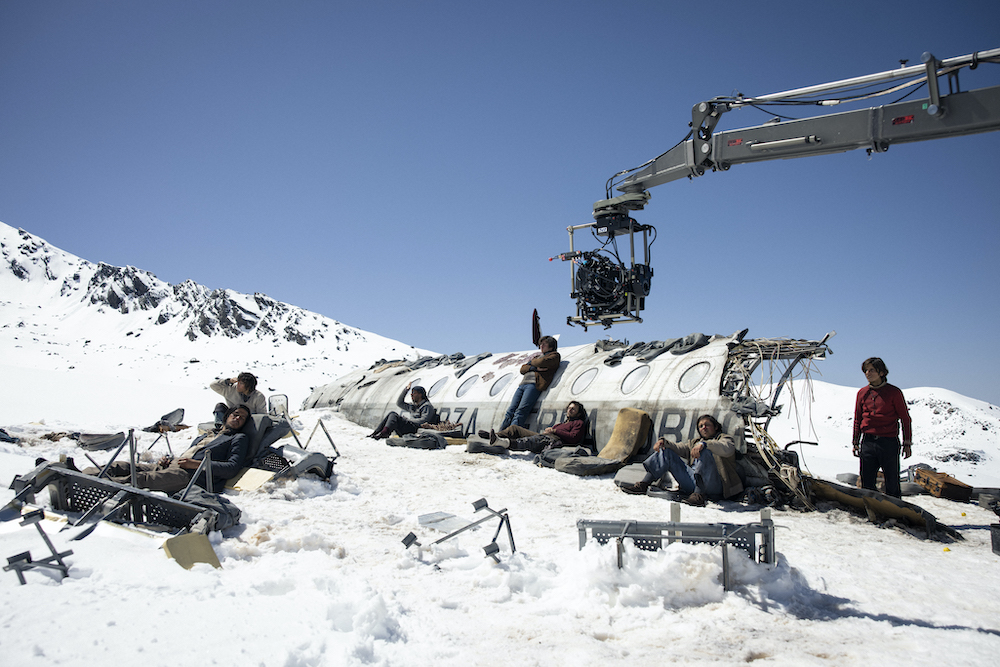Creating a film is a complex and demanding process, and it becomes even more challenging when the scale of the story is huge. In directing ‘Society of the Snow,’ J. A Bayona took on all the challenges and difficulties in his path and delivered a movie that transports the audience to the time and place of the crash of Flight 571 and the 72 days of survival. Considering how much technology is used and the role that CGI plays in films these days, you might wonder how much CGI there is in ‘Society of the Snow.’
Society of the Snow is Filmed with Zero CGI

When Bayona took charge of ‘Society of the Snow,’ he and the rest of his crew knew that they had to make the film as “realistic and respectful” as possible. This wasn’t just the story of the survivors but also the victims. Bayona noted that the story about life and survival couldn’t be told without death, which is why he decided to let go of CGI as much as possible and film the entire movie as realistically as possible.
The events in the film take place in the Andes, so the crew spent some time in the Valley of the Tears, where the actual plane crashed, and the survivors spent more than two months hanging on to dear life. Before going to the location, they used satellite maps and apps to get a sense of the environment and the angles they would require for the filming. They also mapped out how many hours of daylight they’d require, which allowed them to be precise about how to go about the filming process.
Even with all this, the location offered many challenges. The director revealed that it took three days for them to get used to the altitude. Being there allowed them to get a sense of what it might have been like for the passengers who were stranded there with barely anything to support and sustain them. The actors took this experience to their performances. Having captured the background in the Andes, the crew moved to the Sierra Nevada in Granada, Spain, where they spent about 130 days.

Bayona and his team employed the location of a ski resort to film in similar surroundings, giving the actors a taste of the cold and hunger their characters experience. The mountains in Spain were reportedly “ten times smaller than in the Andes,” so the background was digitally replaced with the footage that they’d already shot in the Valley of Tears. With this technique, they never had to use a green screen for filming and could film on actual locations.
While it looks great on our Netflix screens, filming at such an altitude was a challenge for the crew. They had to be constantly in touch with the changing weather and make sure that it would be alright for everyone to be up there. If there was even a slight doubt about the weather, they couldn’t shoot that day. Reportedly, the cinematographer of the film felt dizzy one day and had to be taken back to the hotel, which is at a lower altitude. Actor Enzo Vogrincic also fell ill during the film but continued working.
The Plane in Society of the Snow is Real
With the rule of no CGI in place, the crew of ‘Society of the Snow’ had the humungous task of recreating the plane, which is the most important thing in the movie. The plane goes through several situations. At first, it is complete, but then the crash happens, and then the fuselage itself sees some very challenging times.

The film’s production designers created several versions of the plane to create these different situations. They created three structures for the fuselage, all of them used to film different scenes. One structure was taken to the ski resort at 2800 meters. Its second version was built in a temporal studio in a parking lot in Sierra Nevada. The third version, called the Backlot, had structures resembling mountains in the background as well as a 5-6 meters elevator, which was used to lower the fuselage and cover it with snow. But that’s not it.
One of the most difficult scenes to film in the movie was the crash scene, for which three different sets were built. First, they created the whole airplane, which was used to film the scenes prior to the crash, including the initial turbulence. The second structure had only one-third of the fuselage, which was connected to a gimble to recreate the turbulence when things had gotten completely out of hand. Cable works were employed to show the passengers flying off the back of the plane. To film the scene where the seats and the passengers are slammed forward as the fuselage slides down the steep glacier and halts in the valley, a third set was created with five rows of seats.
All of this shows how dedicated the director and his crew were to making the movie as realistic as possible. They wanted to transport the audience to the Andes with the characters and used these realistic sets to make things as real and relatable as possible for the viewers.
Read More: Where Was Society of the Snow Filmed?


You must be logged in to post a comment.